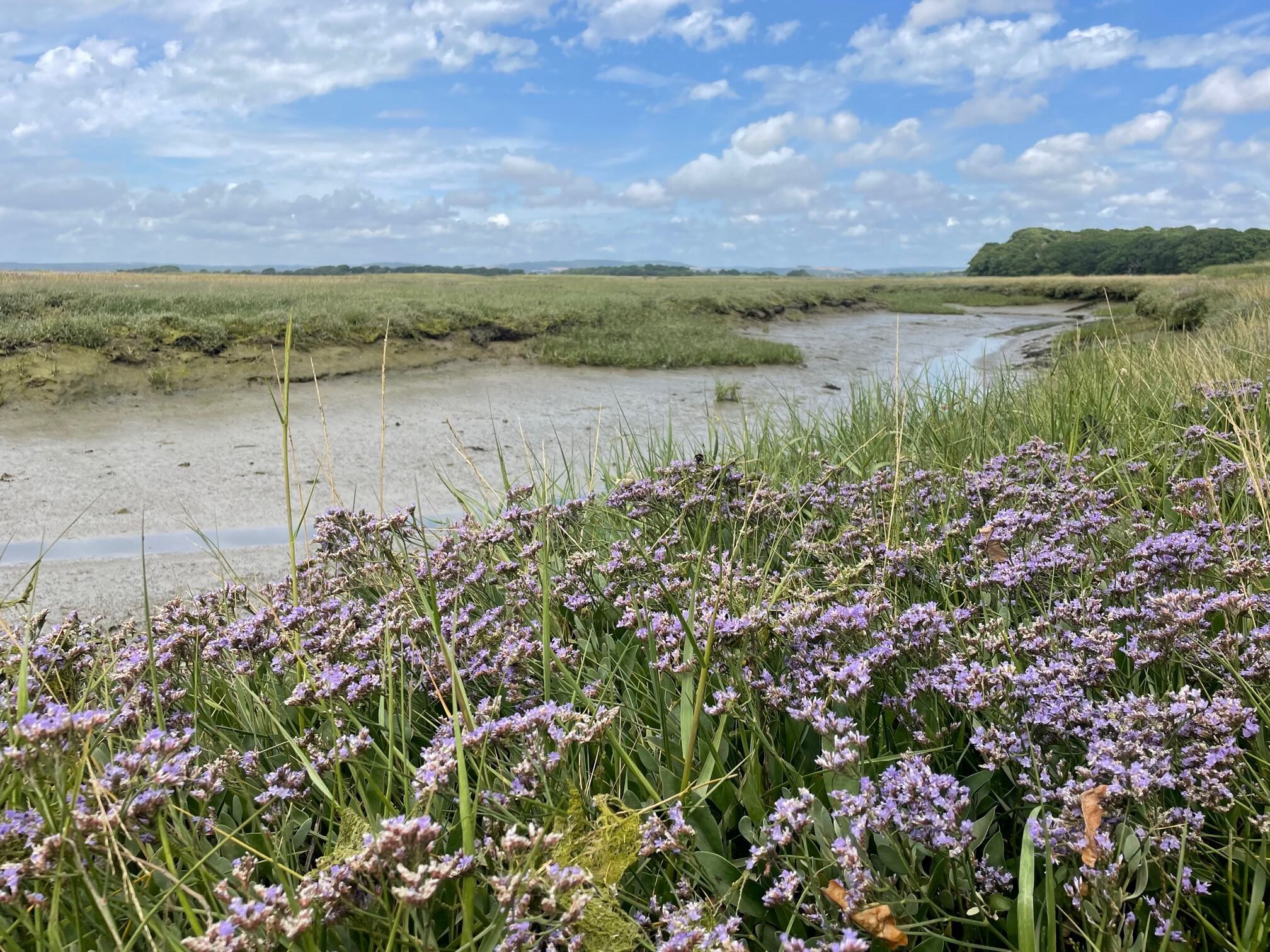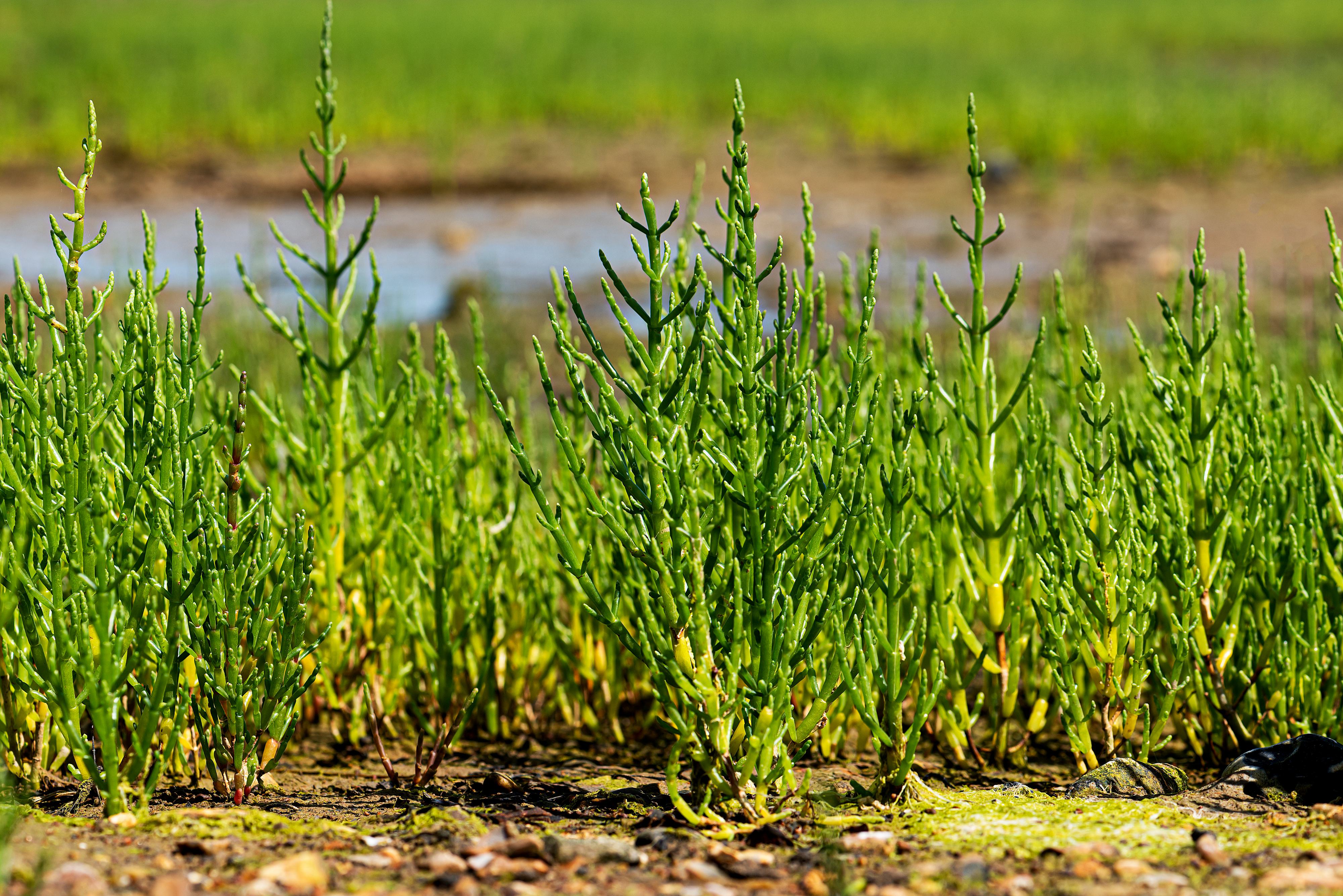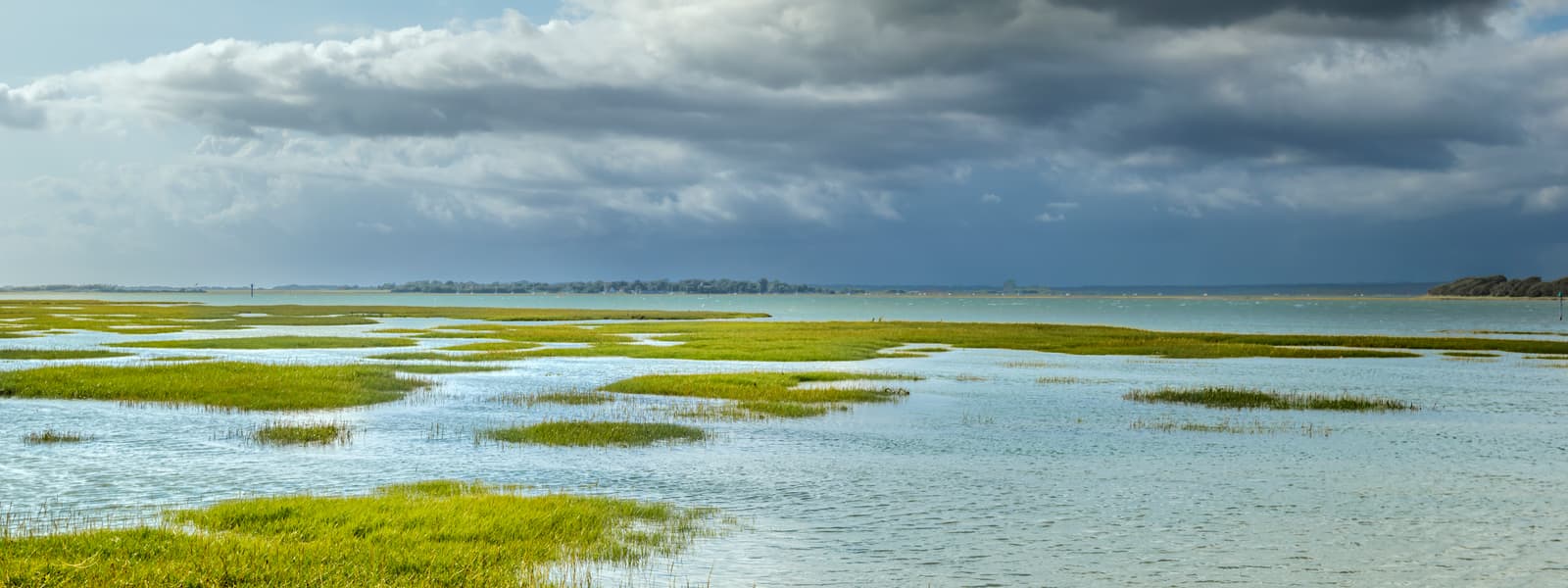Overview
Together with partners, as part of the Solent Seascape Project, Chichester Harbour Conservancy trialled an innovative method to restore saltmarsh using dredged sediment.
The trial has successfully used dredged sediment to raise the elevation of an area of shoreline sufficiently to allow saltmarsh to develop.

Courtesy of Chichester Harbour National Landscape
What's been done
Saltmarsh is a key habitat within Chichester Harbour but it has declined by 58% since 1946 and continues to decline.
A haven of biodiversity, saltmarsh is also a natural flood defence and a powerhouse in capturing and storing carbon; putting it front line in the fight against climate change.
The main threat to saltmarsh is “coastal squeeze” – the presence of hard sea defences reducing sediment supply into the harbour and preventing the landward movement of the habitat as sea levels rise.
Each year an average of 13,000m3 of sediment is dredged and removed from the harbour to maintain safe navigation for vessels and access to marinas. The approach of the trial is to assess whether the sediment can be used effectively to enhance, stabilise and restore saltmarsh habitat.
Significant background work was undertaken to identify an area suitable for the trial – a site was chosen at West Itchenor, close to two thriving areas of saltmarsh, one of which was previously restored through a managed breach in sea defences.
Close to the footpath in a popular area for walkers, it also provides a communications opportunity with the public.
Once a site had been identified, licences to undertake the work were obtained as well as access permission from the local landowner who was extremely supportive.
Timing of the project was key – not only did the dredged sediment need to be freshly available, it was vital that disturbance to the internationally important over-wintering bird populations was kept to a minimum.
The work took place in late February 2023 piloting a new technique – the Saltmarsh Restoration Dragbox (SRDB), similar to a sleigh – designed by Land & Water.
One of the key challenges in using dredged sediment is ensuring it can be placed in the right location (the upper intertidal area) high enough to support saltmarsh colonisation without being washed away.
Owned by Solent Seascape Project
Outcome
Our trial successfully demonstrated the potential of this new approach and its ability to overcome this challenge.
In total, around 1600m3 of dredged sediment was deposited at West Itchenor.
The sediment itself came from a routine maintenance dredge at the entrance to Chichester Marina and was deposited by the dredging company at the trial site. Each load was delivered at high tide as far up the intertidal area as water depths would allow. When the tide had retreated far enough, all the sediment was transferred to the top of the shore by the SRDB and moulded into shape.
Once in place the sediment settled relatively quickly, drying out, and so far has been unaffected by tides or weather conditions.
A survey of the trial site shows that the placed sediment is at heights which should be suitable for saltmarsh plant colonisation. The total area measures around 0.25ha.
Over the summer, we have even seen the first shoots of glasswort develop on the site – a saltmarsh pioneer species. There is a range of monitoring that is taking place on the site to check the success of the trial, but initial indications are that this will be an important part of restoring saltmarsh across the harbour in the future.

Glasswort shoots, courtesy of Chichester Habour National Landscape
“Chichester Harbour is one of the most important sites for wildlife in the UK and saltmarsh is amongst our most precious of habitats. Nature is in crisis; our work to protect and restore saltmarsh is more important than ever.”
Matt Briers | CEO Chichester Harbour Conservancy
